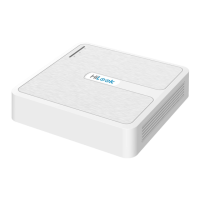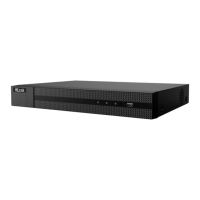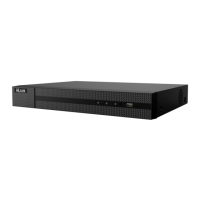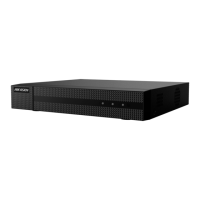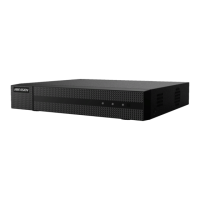Do you have a question about the HIKVISION HiLook IK-6288TH-MH/P and is the answer not in the manual?
Provides information about the manual's content and structure.
Lists and explains trademarks and logos mentioned in the document.
Outlines terms of use, liability limitations, and warranties for the product.
Details FCC compliance, rules, and measures for potential interference.
States compliance with EU directives and WEEE disposal guidelines.
Confirms compliance with Industry Canada standards for digital devices.
Guides through the initial activation process by setting an admin password.
Explains how to log in to the device using patterns or passwords.
Introduces the graphical user interface for live view functions.
Details how to control Pan, Tilt, and Zoom functions of cameras.
Provides an overview of the playback interface.
Explains how to play back recorded normal videos.
Guides on how to play back videos related to specific events.
Describes how to clip and export video segments.
Covers basic system settings like resolution, time, and user management.
Details network settings, including IP, DNS, and HiLookVision.
Guides on adding, configuring, and upgrading network cameras.
Explains storage device setup and recording schedule configuration.
Covers advanced system settings like DST, device name, and live view.
Details advanced network settings like TCP/IP, DDNS, NAT, NTP, and ports.
Covers advanced camera settings like OSD, privacy mask, and event detection.
Explains configuration of various event types like motion, intrusion, and alarms.
Details advanced recording parameters, storage modes, and HDD management.
Guides on restoring device settings to factory defaults.
Explains how to search and export system logs.
Details configuration of system services like RTSP and HTTP.
Instructions for upgrading the device firmware locally and online.
Configures which events trigger hints in the alarm center.
Explains how to view and manage alarms in the alarm center.
Introduces accessing the device via a web browser.
Details the process of logging into the device using a web browser.
Describes the live view interface when accessed via web browser.
Explains how to access and use playback features through the web interface.
Guides on accessing and modifying device configurations via the web interface.
Describes how to access and view logs through the web interface.
Provides definitions for technical terms used in the manual.
Provides information about the manual's content and structure.
Lists and explains trademarks and logos mentioned in the document.
Outlines terms of use, liability limitations, and warranties for the product.
Details FCC compliance, rules, and measures for potential interference.
States compliance with EU directives and WEEE disposal guidelines.
Confirms compliance with Industry Canada standards for digital devices.
Guides through the initial activation process by setting an admin password.
Explains how to log in to the device using patterns or passwords.
Introduces the graphical user interface for live view functions.
Details how to control Pan, Tilt, and Zoom functions of cameras.
Provides an overview of the playback interface.
Explains how to play back recorded normal videos.
Guides on how to play back videos related to specific events.
Describes how to clip and export video segments.
Covers basic system settings like resolution, time, and user management.
Details network settings, including IP, DNS, and HiLookVision.
Guides on adding, configuring, and upgrading network cameras.
Explains storage device setup and recording schedule configuration.
Covers advanced system settings like DST, device name, and live view.
Details advanced network settings like TCP/IP, DDNS, NAT, NTP, and ports.
Covers advanced camera settings like OSD, privacy mask, and event detection.
Explains configuration of various event types like motion, intrusion, and alarms.
Details advanced recording parameters, storage modes, and HDD management.
Guides on restoring device settings to factory defaults.
Explains how to search and export system logs.
Details configuration of system services like RTSP and HTTP.
Instructions for upgrading the device firmware locally and online.
Configures which events trigger hints in the alarm center.
Explains how to view and manage alarms in the alarm center.
Introduces accessing the device via a web browser.
Details the process of logging into the device using a web browser.
Describes the live view interface when accessed via web browser.
Explains how to access and use playback features through the web interface.
Guides on accessing and modifying device configurations via the web interface.
Describes how to access and view logs through the web interface.
Provides definitions for technical terms used in the manual.
| IR Distance | Up to 30 m |
|---|---|
| Video Compression | H.265+/H.265/H.264+/H.264 |
| Ingress Protection | IP67 |
| Model | IK-6288TH-MH/P |
| Focal Length | 2.8 mm |
| Min Illumination | 0 Lux with IR |
| Day/Night | ICR |
| Bit Rate | 32 Kbps |
| Network Interface | RJ45 10M/100M Ethernet |
| Power Supply | DC12V ± 25% |
| Operating Conditions | Humidity ≤ 95% (non-condensing) |
